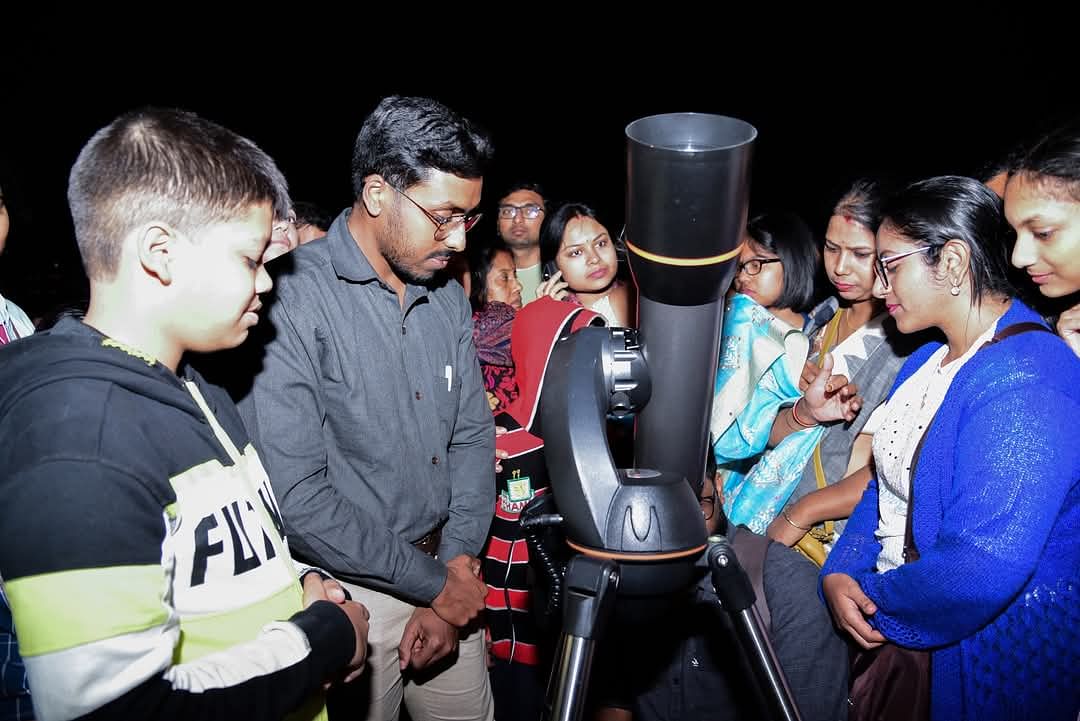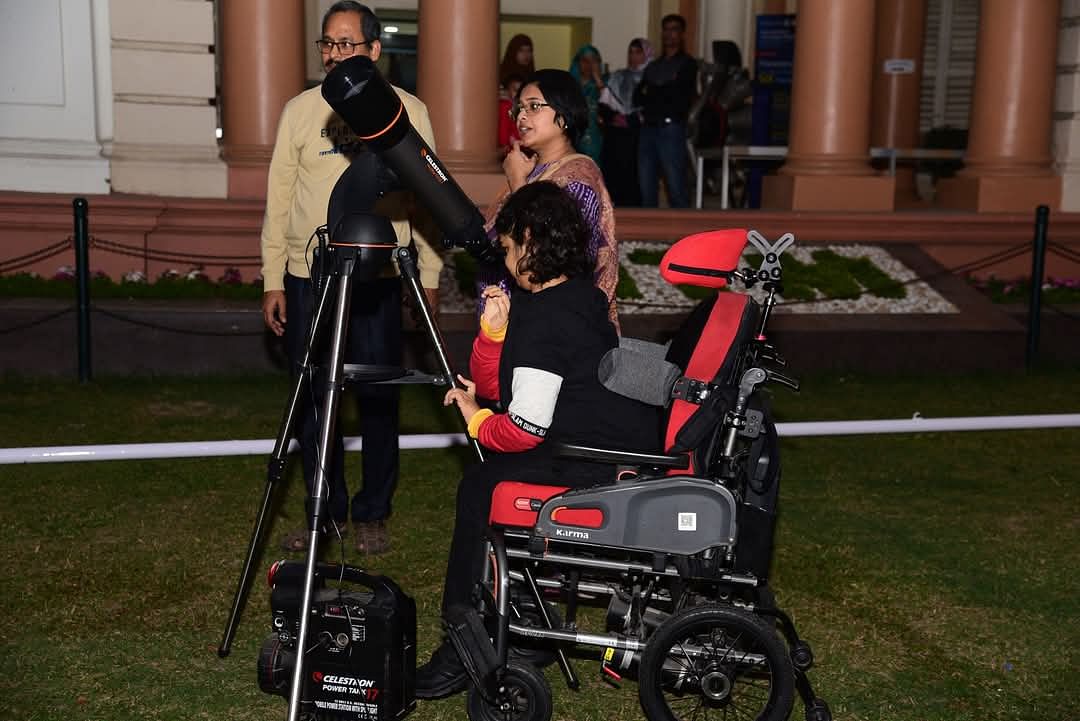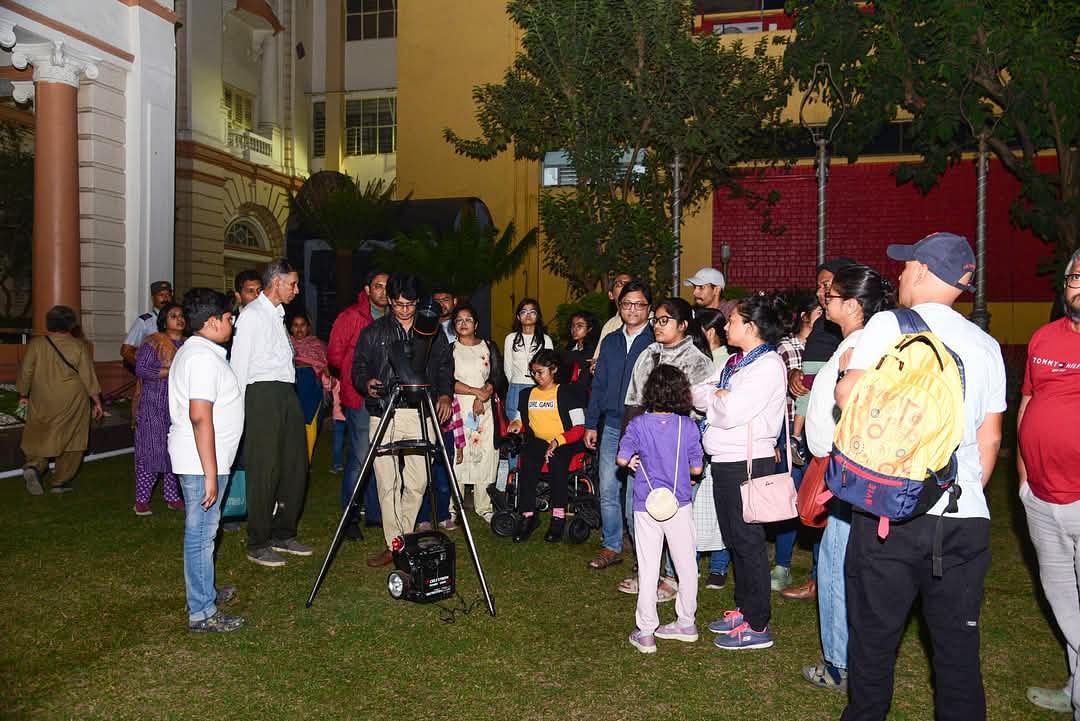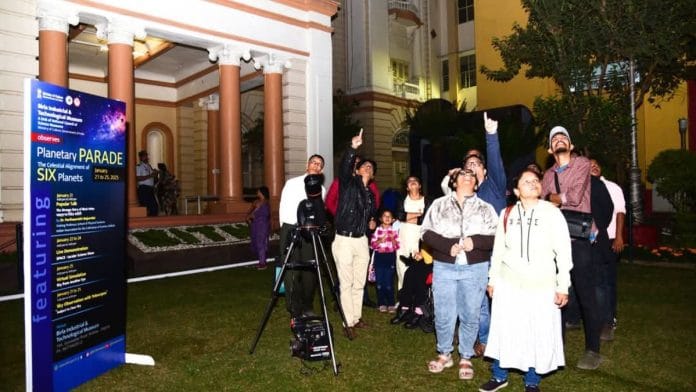New Delhi: The national capital’s high pollution and cloudy skies played spoilsport in the first week of the rare planetary parade. Astronomy groups, school clubs and amateur stargazers had no option but to cancel viewing parties. On the other hand, enthusiasts in Bengaluru, Kolkata and Dehradun posted mesmerising images of Venus, Saturn, Jupiter and Mars in the night sky.
The planetary parade, or the planetary alignment, started showing up in the night skies on 21 January and will be visible till early March. In the first few weeks, four planets will be visible—Venus, Saturn, Jupiter, and Mars. By mid-February, the remaining planets—Mercury, Neptune, and Uranus—will join the parade, making it a visual treat for professional and amateur astronomers.
However, while most of these planets were visible to the naked eye in many cities, New Delhi was left deprived of the view. On 21 January, when the planetary parade was at its best view in most cities, the city recorded an air quality index (AQI) of 289, categorised as ‘poor’ on the Central Pollution Control Board (CPCB) scale. On 22 and 23 January, parts of Delhi-NCR also recorded light rain, which also impacted visibility.
“While this alignment should have been visible without a telescope, the Delhi skies have never been conducive for stargazing. We will arrange a telescope and get the community involved,” said Gyantosh Saran, a Noida-based amateur astronomer. He’s waiting for the skies to clear up before hosting a viewing party.

Public enthusiasm
Indian Space Research Organisation’s (ISRO) successful forays from Gaganyaan to its more recent space docking triumph have engendered an interest in space across the country.
Kolkata’s Birla Industrial and Technology Museum, a unit of the National Council of Science Museums, has already organised three public viewings of the planetary parade since 21 January. Spokespersons from the institute said that the viewings have garnered an exciting response from people, especially children.
“Between 21 and 25 January, we will be organising many more sky observations for the planetary parade,” said a spokesperson from the Birla Industrial and Technology Museum.
Most of the events it has held have been for school students. Over the last week, these viewings have packed auditoriums. Children and adults alike have stood glued to stories about the universe, planets and galaxies before staring into the night skies to watch the planets align. The institute has also been inviting expert speakers to address crowds to help them understand the celestial phenomenon better.

In Bengaluru, the Jawaharlal Nehru Planetarium is also planning a free viewing on 25 January. BR Guruprasad, director of the Jawaharlal Nehru Planetarium, said that the best time for a clear view of the planets would be in the evening because the reflection of the sunlight and optimum sky conditions helps the planets appear brighter.
“But it also depends on what the weather will be like that day,” he said. And that’s where Delhi is losing out. The Nehru Planetarium here has yet to release a viewing schedule.
The fact that seven planets will be visible in the night sky has piqued the interest of stargazers around the world. The last time such a rare event occurred was in 2022.
“The exciting part of this parade is that most of these planets will be visible to the naked eye. You might need a telescope to view Neptune and Uranus,” Virendra Yadav from the Aryabhatta Research Institute of Observational Sciences (ARIES) told ThePrint.

How rare is the event?
Astronomers say that an alignment occurs on the ecliptic—an imaginary plane that directs the Earth’s orbit and that of other planets around the Sun. All seven planets stay on this plane while moving at different speeds. Since each planet is at a different distance from the Sun, its orbital speed varies.
The farther the planet is from the Sun, the longer it takes to complete one revolution.
The rarity of the planetary alignment comes from the fact that it is easier for a few planets to align when they cross paths during a revolution, but for all of these to align is a rare event.
It is also important to note that as planets move through the ecliptic, they might eventually align, but they will never form a perfectly straight line. This is because each planet has a slight deviation in its location relative to the ecliptic, and its orbits are tilted at varying degrees relative to the plane.
N Srinath, a Pune-based banker who is also an amateur astronomer, said that he has been organising planetary viewings for small groups of friends and family. He is also encouraging people on social media to post pictures of the alignment as spotted in their cities. The response has been scores of breathtaking views of the sky, with planets shining brightly amid the stars.
“This planetary parade is special because, this time, people have shown tremendous interest and have come out to view this spectacle in large numbers. It could be because it was publicised well on social media. Now, people can just pick up their telescopes and watch the view. Before this, most people did not even get to know about such events, and even when they did, they had to go to a planetarium to watch it,” Srinath said.
(Edited by Ratan Priya)







Delhi is not missing out on anything. Delhites are just not interested in star-gazing, planetary parades, etc.
Delhi students are interested only in the syllabus. Nothing beyond the syllabus attracts them. As a result, they clear all kinds of entrance exams and get admission into top institutes.
But their taste in literature, poetry, art, music and other such extra-curricular domains is pathetic. Simply because they are just not interested.
Compare that to the average student in Pune, Calcutta, Bangalore or Chennai – the difference in attitude towards life is startling indeed.